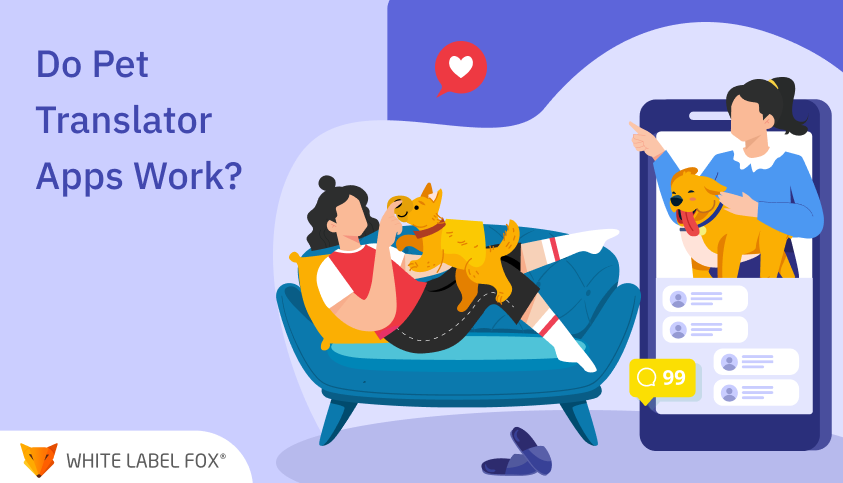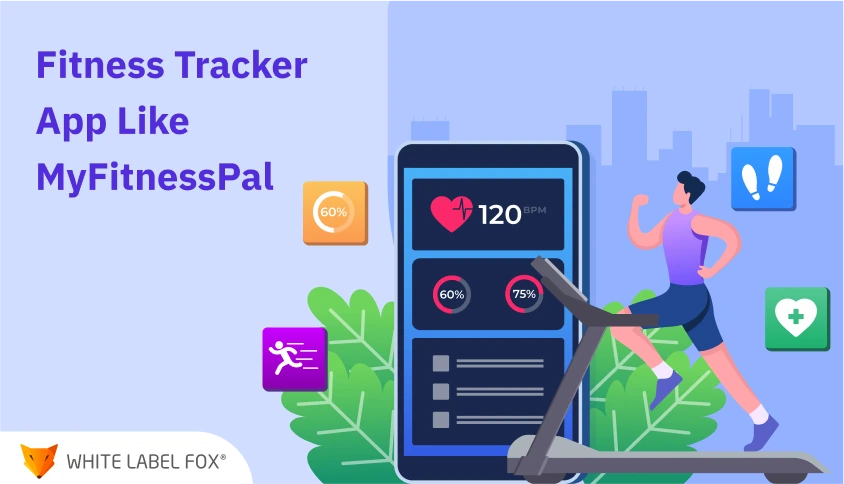Currently, the market for pet-related products is steadily growing, and one of the noteworthy recent developments is the pet translator apps. As the demand for pet care services continuously expands, many people who own businesses want to find ways to provide new services for pet owners. Applications that translate the sounds and body language of pets have also attracted much attention; people’s interest is growing, and they are questioning the applications. These apps are designed to create a channel between pet owners and their pets to gauge how their pets feel and what they require accurately.
With this trend gaining momentum, multiple platforms are available in the market, each with its characteristics and technological developments. Some apps translate dogs’ barks into human language, and apps translate cats’ meows into human language. These apps crowd the market as potential solutions for interpreters to understand pets. This has not only seen a growth in the variety of pet apps the market offers but also enticed many business-minded individuals due to its growing trend.
However, can these pet translator applications be believed to be as effective as they claim to be? Can animals’ sounds be translated into words as human beings say or think in their mind? Much research is being done on the possibilities of using artificial intelligence and machine learning to decode animal signs. It is high time we explored pet translator applications and understood how they came to be and how they work.
We Would Love Help You Upscale Petcare Business

What is a Dog Translator App?
A dog translator application is an application developed for mobile gadgets. It interprets the sounds or actions of the dogs and translates them into understandable form. These apps harness features such as AI and machine learning to model dog sounds, vocalizations, and language, a resource to see what the dog might be trying to convey.
The main idea behind these apps is to improve the quality of the relationship between owners and their pets, paying specific attention to the dogs.

Source:
Research NesterPet owners are becoming increasingly interested in caring accessories and inventions, so dog translator apps have become popular.
According to a report by Grand View Research, the global pet tech market, which includes pet translator apps, is expected to reach $7444.3 million by 2031, growing at a compound annual growth rate (CAGR) of 22.6% from 2019 to 2025.
This growth is attributed to the rising number of pets and the need for enhanced technological care methods. Several options exist for applications that help translate a favorite dog’s barking.
- One can mention BowLingual, which officially states that it can translate dog barks into human words.
- Dog Translator Simulator is an application that allows the user to change the language in a fun way.
- Another app that many people are fond of is Human-to-Dog Translator. Using it, people can record their dogs’ sounds and have a funny translation for them.
Whether these apps are scientifically accurate is debatable, but pet owners’ desire to find a more excellent bond with their pets is real.
Explaining How Dog Translator Apps Work and More!
Dog translator apps are based on a brilliant idea that runs simultaneously with the branch of scientific knowledge and technological innovation. These apps provide people with a way of understanding exactly what the dogs are conveying through voice and other gestures.
Although translating a dog’s bark into a human language could quickly enter the realm of science fiction, significant advancements in technology and understanding of animals have paved the way for such devices.
Dog Translator Apps: How Do They Work?

Dog translator apps use intelligent tools such as AI, machine learning, and NLP to analyze dog sounds and signs. Here’s a breakdown of the primary components and how they function:
Audio Analysis
Several free dog translator apps have their foundation in helping to record and interpret a dog’s bark or other sounds. These apps mostly use machine learning to learn a set of dog sounds from many samples. In this way, using these databases, the application tries to classify the bark into corresponding forms of communication, for example, excitement, distress, anger, etc.
Behavioral Cues
Some sophisticated applications also integrate with graphical and behavioral interpretation. These apps use the phone’s camera to detect the dog’s body language and the position of its face to elaborate on the sounds coming from it. It is also important to incorporate other features, such as tone of voice, gesture, and body language, to better understand what the dog might be trying to express.
Pattern Recognition
These apps can educate over time about a particular dog’s patterns of interaction. Thus, machine learning algorithms enhance their experience and help them learn better when it comes to predicting the meaning of sounds produced by the dog as well as the actions of the animal.
Best Examples of Dog Translator Apps
Some applications have gained much attention among pet owners due to their unique reactions to dog indications. Here are a few notable Android app examples:
Dog Translator Simulator
This app is a fun and exciting way to get your dog involved and keep it active. Although it doesn’t have any scientific evidence, it gives a humorous interpretation of what dogs are barking, and hence, it is very common.
Human-to-Dog Translator
It allows users to record their dog’s sounds and receive an amusing translation. It’s less for communication than fun, but as with social networking, it speaks to the increasing focus on animal behavior.
The Science Behind Animal Communication
For years, the scientific world has paid close attention to animal signaling. Studying this area mainly involves investigating how animals easily employ vocal sounds, postures, and other signals within themselves and their setting.
Dogs use vocalizations and the overall communication model, which includes barking, growling, whining, and other sounds, body language, and facial expressions. The literature clearly shows that dogs use vocal patterns to communicate emotions and intentions in various ways.
For instance, when a dog is excited or playing, it will bark in a high pitch, but when it is angry or fearful, it will growl in a low pitch. Consequently, features like tail movements, ear direction, and other signals pointing toward the dog’s physical and environmental condition are also important.
Recent applications are more of near-scare entertainment than accurate translators, which, although not scientifically grounded, are an exciting path in pet care applications. As more technological resources pour into AI and machine learning advancements and more research is conducted on animal behavior, there is a promise for continuous improvement of the communication systems between human beings and their pets.
The Role of AI in Dog Translator Apps

Source:
Grand View ResearchDog translator is not simply an application developed based on Artificial Intelligence (AI) to understand dog barks and gestures. AI’s role starts with machine learning algorithms fed different dog sounds and movements. In doing so, the AI can develop an understanding of how to interpret certain barks or whines and make assumptions about their significance.
Machine Learning and Data Analysis
AI is broadly divided into two categories, machine learning being an important element used in dog translator applications. Such algorithms will become brighter as more data are collected in their operations. First, the AI is exposed to dog sound clips associated with specific emotions or actions.
Real-Time Processing
Another advantage of AI is that it can analyze data in real-time, contributing to the enhanced user experience when using dog translator apps. When the user uses their mobile device to record their dog’s bark, the AIH processing instantly analyzes the audio signal and maps it to the learned models to offer a real-time translation.
Continuous Learning and Improvement
It is also important to mention that one major strength of AI is that it is capable of learning over time. Another advantage is that with each request made to the app, new information that the AI can train its parameters appears. This implies that if the user spends additional time using the application, the AI understands that particular dog more effectively.
Concluding Words: Do Pet Translator Apps Work?
The growing world of pet care has produced new gadgets, such as apps that translate dogs using high-tech techniques.
Although these apps are not very advanced at the moment and, for the most part, are entertaining more than anything else. They do confirm one indisputable fact: Pet owners want to learn more about their pets.
Understanding the science behind these animal translator apps and the state of their technologies provides a window into what is currently possible and what will come in the upcoming years. In the coming years, we might see people and pets connect instantly.
Even though a few well-developed dog translator apps are inaccurate, their existence showcases the stimulating extent to which technology is being incorporated into the animal care sector.
The pet care and dog walking service market is rapidly growing as many people seek to improve the quality of both pets’ and owners’ lives. The industry is growing and changing fast, and if you want to build a translator app in this sphere, feel free to contact us. Our focus is on designing tomorrow’s applications and utilizing today’s technologies to address the needs of today’s pet owners.
Frequently Ask Questions
Pet translator apps are mobile applications designed to interpret or
simulate communication between
humans and pets, specifically dogs and cats. These apps often claim
to
"translate" animal sounds or
behaviors into human language.
Most pet translator apps use sound recognition technology or AI
algorithms to analyze the vocalizations
or body language of pets. They then attempt to match these sounds or
gestures with human-like
interpretations, although the accuracy of these translations is
still
debated.
While pet translator apps claim to translate animal sounds, they are
largely based on guesswork rather
than concrete science. Animals communicate through body language,
vocalizations, and scents, and
translating this into specific human language is currently beyond
technological capabilities.
Many pet translator apps are not based on scientifically proven
methods.
They often rely on
pre-programmed sound libraries and algorithms to simulate what a pet
might "mean" based on certain
vocalizations. While some apps attempt to analyze pet behavior,
there’s
no verified scientific basis
for accurate translations.
Most pet translator apps have limited accuracy. While they might
identify certain vocalizations or
body language patterns, they can’t provide precise translations of
what
your pet is communicating.
The interpretation provided is often generalized and might not
reflect
your pet’s unique behavior
or emotions.
Pet translator apps might give you an idea of your pet’s emotional
state, such as whether they’re
happy, anxious, or hungry, based on their vocalizations. However,
the
interpretations are broad and
not tailored to individual pets.
While they can provide general insights into what your dog might be
feeling (e.g., stress, excitement),
these apps cannot fully replace understanding your pet's unique
needs
through direct observation and
communication. They should be used as supplementary tools, not a
substitute for understanding your
pet’s body language and behavior.
Yes, there are several apps in the market, such as:
- Pet Translator
- Dog Translator
- Animal Translator
These apps offer various features, including interpreting your pet's
sounds or providing sound effects
to simulate communication with your pet.
- Pet Translator
- Dog Translator
- Animal Translator

















